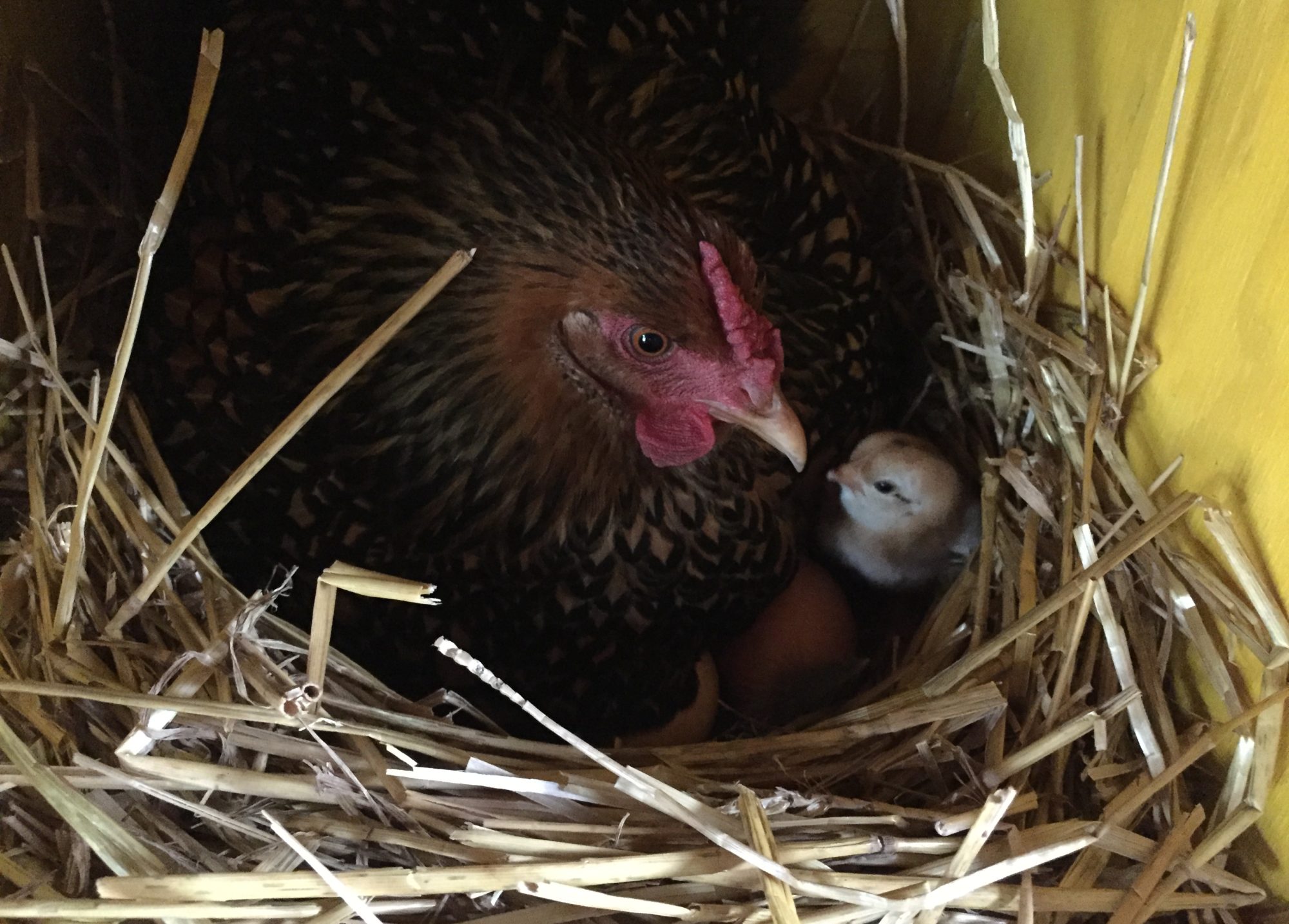Chicken Superpower: Eyesight
You’ve probably seen a chicken scratching the dirt and pecking the ground. It’s just dirt, but the hen seems to be so deliberate in her actions. What could be so interesting? It’s because she sees what you can’t. Eyesight is a chicken’s super power (at least during the day). Let’s explain.
Like humans, chicken eyes contain photoreceptors called rods and cones. Rods help to see at night, and cones see colors during the day. Chickens have very few rods, meaning their night vision is poor (worse than humans). Like humans, chickens have three types of cones to see red, green, and blue.

Here is where the super power comes in. Chickens have two EXTRA types of cones that humans don’t!
The first extra cone is an Ultraviolet or UV cone. UV rays come naturally from the sun. It’s what gives you a sunburn. Many insects, seeds, and shiny things reflect UV light, but grass and dirt don’t. Chickens see the UV reflection, so when you see a chicken scratching and pecking at the ground, it isn’t random. The ground is like a disco ball, full of shiny specks ready to be eaten. And chickens are naturally attracted to shiny things. You’ve probably seen them peck at your diamond ring or earrings. They’ll also swallow shiny things that shouldn’t be on the ground like nails, screws, foil, glass, and staples, all of which can be harmful to a chicken. After your next building project, clean it up! And here’s something interesting: feathers also reflect UV light, but male and female feathers reflect UV light differently, allowing a hen to recognize when the rooster is approaching!
The second extra cone is a double cone, which gives a chicken extra sensitivity to detect motion. Chickens spend much of their day searching for food. The cones help them see movement on the ground, like worms and insects. And since chickens are vulnerable to hawks and eagles, the double cone gives them early warning of movement and a little extra time to hide. If you want to see this in action, throw a piece of bread or something soft into your chickens and over their head. They’ll move and probably squawk long before it hits the ground.
 Did you ever try to catch a chicken during the daytime and fail? You’re not alone. They see you coming and can detect your slightest movements! Here’s a pro tip: if you are trying to catch a chicken and you have it cornered, spread your arms out. Wiggle your fingers on one hand, and the chicken will see the motion and try to determine where you’re going. In that split second, use the other hand (that they’re not watching!) to grab them by the tail. It takes some practice but it really works!
Did you ever try to catch a chicken during the daytime and fail? You’re not alone. They see you coming and can detect your slightest movements! Here’s a pro tip: if you are trying to catch a chicken and you have it cornered, spread your arms out. Wiggle your fingers on one hand, and the chicken will see the motion and try to determine where you’re going. In that split second, use the other hand (that they’re not watching!) to grab them by the tail. It takes some practice but it really works!
 Another reason they can see you coming is that chickens have a 300-degree field of view because their eyes are on the side of their head. Humans, with eyes in front, can only see about 180-degrees. Most of what a chicken sees is in monovision (one eye), but they have stereo or binocular vision (both eyes) in a 25 degree cone directly in front of them.
Another reason they can see you coming is that chickens have a 300-degree field of view because their eyes are on the side of their head. Humans, with eyes in front, can only see about 180-degrees. Most of what a chicken sees is in monovision (one eye), but they have stereo or binocular vision (both eyes) in a 25 degree cone directly in front of them.
How about more super powers? Chickens can use each eye independently to focus on two different. And the left eye is far-sighted while the right eye is near-sighted. So a chicken can look for food with the right eye while watching for hawks with the left eye! Did you ever notice a chicken tilt its head to the right when it first sees you? Next time notice they’re using their left eye to look at you!
 What about protecting those super powers? Did you ever see a chicken take a dust bath? Dust bathing looks like a chicken is having a seizure in the dirt. With all that debris flying around, how does a chicken protect its eyes? Well, it has an extra eyelid, called a nictitating membrane. It slides horizontally from the front to the back to protect and lubricate the eye. It’s also transparent, so the chicken can still watch for danger.
What about protecting those super powers? Did you ever see a chicken take a dust bath? Dust bathing looks like a chicken is having a seizure in the dirt. With all that debris flying around, how does a chicken protect its eyes? Well, it has an extra eyelid, called a nictitating membrane. It slides horizontally from the front to the back to protect and lubricate the eye. It’s also transparent, so the chicken can still watch for danger.
So the next time you’re looking at a chicken, remember to admire their superpower. A chicken might never become a Marvel superhero, but the amazing power of their eyes are difficult for us simple humans to comprehend.








